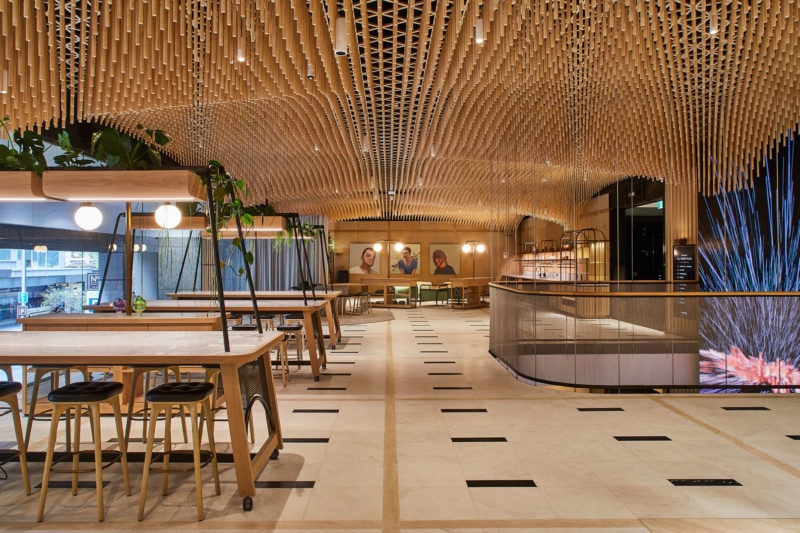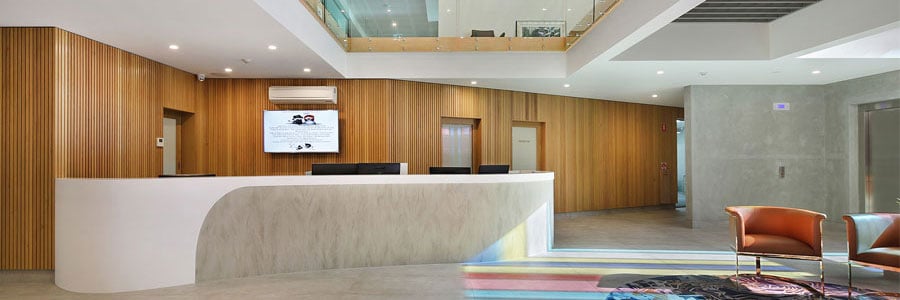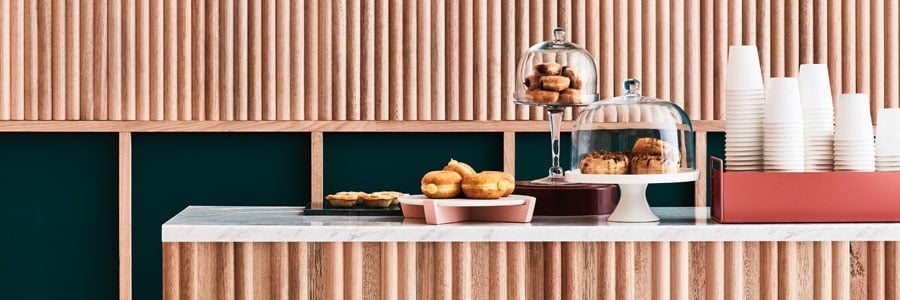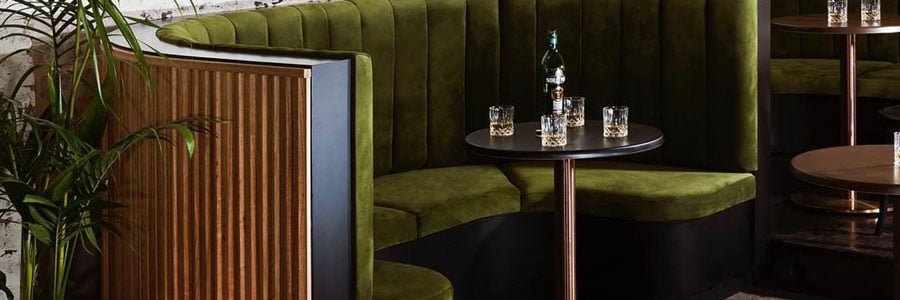Timber wall and ceiling linings are becoming more popular across commercial and residential design because of the softness, texture and warmth timber can provide to the atmosphere of a room or space. The term ‘timber makes you feel good’ is now becoming understood and accepted as a statement backed up by scientific fact, as well as aesthetic appeal.
However, because timber is sometimes misunderstood, we wanted to share a few simple tips to help you protect your timber specification, and answer the questions we receive every day.
There are 4 simple questions to ask yourself when considering a timber product, plus a specification checklist to use when finalising your documentation.
Let’s use Porta Contours timber linings as the product example.
1. What Group number is required?
Ask if a fire assessment has been done and if a fire retardant product is required. A Group 1 rating is typically required for large entrance foyers, lift lobby’s, fire exits, common areas or anywhere near a fire exit.
All timber, including contours, achieve a Group 3 rating. To achieve a Group 1 or 2 rating on timber you need to specify a coating. One well-known brand on the market is Fireshield, a clear coating by DULUX. It can be factory applied or applied on site. Ask Porta for an introduction. Fireshield means you can now use timber anywhere in your design!
2. What appearance grade of timber do you want?
Timber can be specified to achieve varying degrees of character. This means the natural ‘characteristics’ such as gum vein, knots, dark spots, grain markings (and more) you see in timber is available in different intensities.
Timber is grouped (or graded) into 3 types of appearances you can specify (as per the Australian Standard). Select Grade Timber has very little, to no character, offering a clean finish. Medium Feature Grade (also called Standard or Prime) has more character than Select, and finally High Feature Grade (also called Classic) has substantially more character. By talking to a timber supplier, you can see how different grades can offer you different styles, and potentially support project budgets. Porta Contours is available in different timber grades so call us to arrange a meeting and see how they can offer different styles for your project.
3. Do you require a hard timber and a hard wearing coating?
This is often a question not asked, however, it is important to answer at the specification stage. If your design is in an area of high wear and tear or high traffic the hardness of the timber and the coating used to protect the timber surface will need to be considered. Contours is made of Tasmanian Oak, a hard timber for internal use. Pine is a very soft timber and can be dented easily (great for ceilings, and is great value for money!). Contours can be finished with standard or industrial strength coatings that offer moisture and scratch resistance protection. Contact us for further advice or a recommended contractor.
4. The design profile you desire?
Timber is a very versatile material as it can moulded to achieve textured profiles or unique shapes. If you are looking for something unique perhaps a Custom moulded lining is more suitable. The Porta Contour linings are made to a size that ensure stability, availability, limited waste and concealed joints however we understand that this may not always suit your design requirements. Custom profiles are not substantially more expensive than the range we stock. The price is impacted by the timber species, thickness, width and quantities. We can help to meet your deadlines and importantly desired profile and finishing requirements. Start talking to us early so we can help you understand the options available and meet your deadlines. (Please note that Minimum Order Quantities do apply for custom projects)
5. Protect your specification
The performance requirement check list below is a guide to help protect your specification, but also serves as a list of terms to understand when designing with timber. One critical question to also consider is the available budget. This can help greatly knowing what factors to pull to ensure your specification is also accepted and budget met. We can also provide options should VM or estimators seek to reduce costs. Our role is to help you understand each of these terms so please call or email us to discuss your project and where you would like timber to be used.
Specification Checklist:
- Supplier name
- Product name, code, length, dimensions – an image of profile also helps
- Timber species
- Certification – FSC, PEFC, Responsible Wood (formerly AFS)
- Hardness - Janka
- Grade of timber - appearance
- Fire retardant coating for Group 1 – i.e. Fireshield
- Pre-finished product by Porta, including colour reference
- External requirements: Durability, Pre-coating, Maintenance schedule, Leaching
A timber supplier with experience sourcing, moulding and finishing timber is a valuable relationship to build. At Porta we offer honest advice as we have been working with timber for over 75 years and are confident our experience will help you achieve the style you want, but also importantly provide a stable and compliant product.
Lastly, if you see your timber specification removed after VM please call us. We can provide other options that seek to meet your budgets. Our goal is to have Australia enjoying the feeling and atmosphere timber creates in interior design!






